A Happy RC Christmas
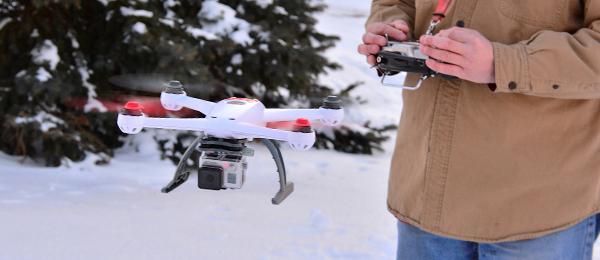
Article by Aaron Baldwick. Photos and captions by Model Aviation staff and contributors. Holidays tips for the first-time airplane lover. Online exclusive feature.
So you’ve been good all year and Santa has delivered all sorts of great holiday gifts and placed them under the Christmas tree. There are a few impressively large boxes and a bunch of smaller ones all grouped together with your name on them! Oh, what a great RC Christmas this is going to be! Regardless of what is wrapped up under the tree, there’s plenty to do before you enjoy all of the fun and adventure RC model airplanes can provide in the coming year. But what exactly should you do next? Let’s figure it out.
Off to a Good Start
Ideally, the best present would be a gift card to the local hobby shop. To purchase your first RC airplane, don’t go to the shopping mall. A hobby shop that specializes in the RC hobby can help you find many of the great products and accessories you’ll need to build and fly your first model aircraft. The shop owner can help you figure out what best suits your needs and put you in contact with other RC modelers in your area. Talk with these pilots and see if there is an RC club nearby that you can join. Like everything else in life, if you want to learn a new hobby, finding people who already do it and learning from them is the best way to get started.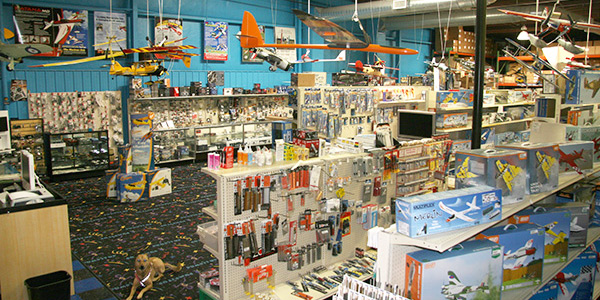
Find a local hobby shop by clicking http://www.modelaircraft.org/hobbyshopsearch.aspx.
Here is a shopping list for success.
- Radio gear: Four to six-channel programmable radio system. Its function can expand as you grow in the hobby.
- Molded foam trainer: Several have built-in flight stabilization systems that make learning easier.
- Multi-function battery charger: Adjustable and can be used with all types of battery packs.
- Model maintenance stand: Minimizes dings and dents while working on your aircraft.
- Field box: Can be used to organize all of your flying accessories.
- Basic tool kit: With screwdrivers and wrenches in the sizes you need for your models.
- Quality sunglasses: You’ll be spending plenty of time looking up in the sky.
- Popup shade tent and folding picnic chairs: For creature comforts at the field.
- Small roll-up rug: To put under your model at the field. It helps prevent the loss of screws and nuts.
- Flight logbook: To document your successes and challenges. Learn by not repeating mistakes.
- Spare hardware: Just in case something breaks or gets lost.
- RC flight simulator: This is the best way to train your thumbs and your hand/eye coordination before you go to the flying field.
Get Your Card
The Academy of Model Aeronautics (AMA) is the national organization that governs and promotes all types of aeromodeling hobbies, not just RC. Get to know the AMA and take a little time to explore its website at www.modelaircraft.org. The AMA provides accident insurance to protect you while you fly your model airplane. The coverage is included with your AMA membership. You can subscribe to Model Aviation—a monthly magazine that is a good source of RC airplane information, including local and regional events. If you prefer, you can also receive the digital version of the magazine and read it on your mobile device or PC. Getting your AMA membership card should be at the top of your “to do” list. To join the AMA, visit https://www.modelaircraft.org/joinrenew.aspx.Pick Your Airplane
For a first-time RC modeler, you want a sturdy, easy-to-fly airplane that’s simple to put together. The best way to get started is with an electric-powered airplane. Many of these RC aircraft come in a complete package that includes everything you need such as the airplane, the radio system, a battery pack, and a charger. Don’t get a sport aerobatic airplane or a warbird. These will require advanced piloting skills and what you need is an aircraft that provides plenty of “think time” while you are learning how to fly. After you open the box, the first thing you need to do is to read the instruction booklet. Do it several times so you really understand how to put the airplane together. Don’t try to simply wing it. For your model airplane to properly operate and fly, it has to be correctly assembled.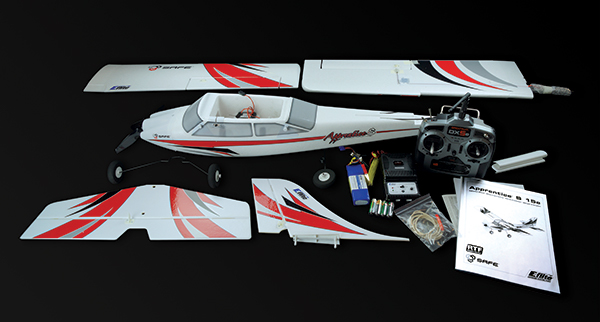
The E-Flite Apprentice S requires little assembly and includes everything you need to get airborne, including the DX5e transmitter batteries.

Like the Apprentice S, the HobbyZone Super Cub S is built with AS3X and SAFE technology to aid beginner pilots.

New pilots will want a coaxial helicopter than can easily maneuver around obstacles like the Heli-Max Axe 100 CX.
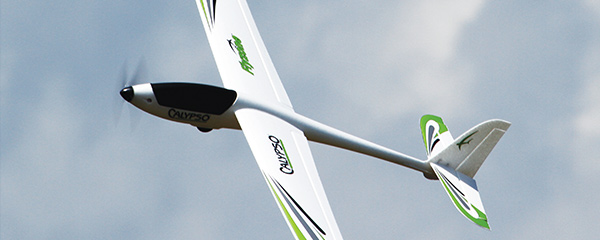
Consider a well marked and colorful aircraft. The Calypso is easy to see, even when high in the sky thanks to the green and blue colors on the bottom of the wing.
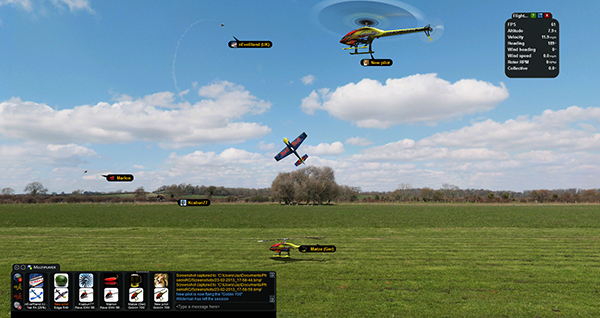
Practice on a flight simulator. Many simulators, like the Phoenix R/C Pro Simulator, includes a transmitter.
All Charged Up
An important part of any successful first flight is to treat your battery pack with care. Most electric airplanes are powered with LiPo battery packs and it is important to use the correct one with the proper voltage and capacity. The information you need is all on the battery pack’s label. When it comes to charging the pack, you also need to properly set it up. Read the instructions that come with your battery and your battery charger. If you need a good stocking stuffer, extra packs are great to have and will increase your flying time between charges. To make things as simple as possible, try to use the same brands. This way, the battery pack connector will match the airplane’s speed controller connector as well as the charger’s connector. Always set up your charger for the proper voltage and current to match its capacity, and never force different brands of connectors together.
Read the information on the battery pack's label. Zeus LiPo packs show charge and discharge rates on the label, the label here suggests to charge at 2C or less.
Naughty and Nice List
Naughty
- Don’t fly alone. Always have a friend with you as a spotter for increased flightline safety.
- Don’t work on your electric model with the propeller attached. If you are setting up and adjusting your new airplane in the workshop, remove the propeller to prevent accidents.
- Don’t try to learn how to fly by yourself. The help of an experienced modeler or instructor greatly increases your chances for success.
- Don’t fly without permission. If you do fly from a local park or field, be sure to get the okay from the landowner.
- Don’t fly over people, buildings, or roads. Keep the airplane over a clear area, away from hazards.
Nice
- Do join the AMA and become a member of a local RC club. It will be more fun and the learning curve will be shorter.
- Do read all of the instructions that come with your airplane and equipment.
- Do check the balance of your aircraft before the first flight. A little nose-heavy is better than a little tail-heavy.
- Do take care of your equipment. Get organized and use a flight box and tote containers to keep your gear off the ground.
- Do check your airplane and equipment before each flight and test the radio range before taking off.










2 comments
Great advice!
Perhaps one of the reasons
Add new comment